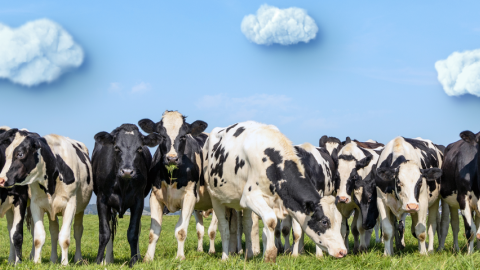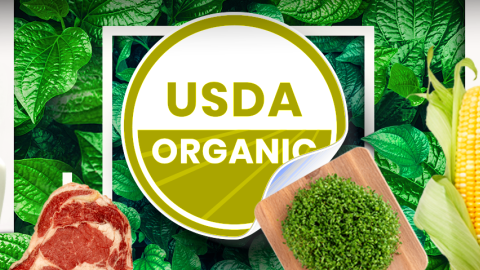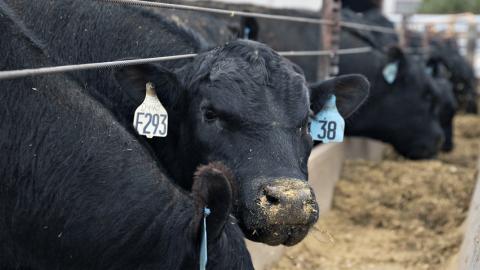In the United States, producers’ sales of livestock, dairy, and poultry products accounted for nearly $259 billion in agricultural cash receipts in 2022. This page examines issues relevant to livestock commodities, including price reporting and animal health and welfare.
The Federal Government administers policy and publishes regulations for livestock and livestock-related issues through USDA and other Federal agencies. Policy covers programs ranging from livestock insurance to environmental conservation programs. Livestock and meat production and marketing are influenced by Federal regulations on manure storage and disposal, animal health and safety, mandatory price reporting, and country-of-origin labeling.
Policy issues
Federal commodity programs for livestock are generally not comparable to those for crops. The two exceptions are dairy and wool.
The Agricultural Improvement Act of 2018 (2018 Farm Act) provides disaster assistance to livestock producers under three programs: Livestock Indemnity Program; Livestock Forage Program; and Emergency Assistance for Livestock, Honeybees, and Farm-Raised Fish. For further information on these programs, see Disaster Assistance Programs.
When livestock producers are under financial duress, USDA's Agricultural Marketing Service (AMS) may purchase meat, poultry, fish, and egg products for domestic feeding programs to stabilize prices through its Food Purchase programs.
USDA's Risk Management Agency offers insurance for cattle, swine, and lamb that protects against declining livestock prices or shrinking gross margins (livestock price minus feed costs).
USDA's Animal and Plant Health Inspection Service (APHIS) oversees USDA's Disease Eradication, Animal Health Surveillance System, and Emergency Management Response System. It is Federal policy to pay an indemnity based on fair market value for any animals seized and destroyed for public or animal health reasons.
The discovery in December 2003 of bovine spongiform encephalopathy (BSE, or mad cow disease) in a dairy cow in Washington State led USDA to announce additional safeguards to bolster U.S. protection against BSE and further protect public health. APHIS provides the latest USDA information on BSE.
Federal programs also pay participating livestock producers for adopting conservation and environmental measures aimed at protecting natural resources. The programs primarily are intended to enhance or conserve soil and water resources. USDA's Natural Resources Conservation Service administers several programs for livestock operations. These include the Environmental Quality Incentives Program, which provides technical, educational, and financial assistance to eligible farmers and ranchers to address soil, water, and related natural resource concerns on their lands in an environmentally beneficial and cost-effective manner.
The Conservation of Private Grazing Land initiative provides technical, educational, and related assistance to conserve and enhance private grazing lands. Among the stated purposes of the initiative are the conservation and improvement of wildlife habitat, fish habitat, and aquatic systems.
Regulatory Issues
Animal Waste
The U.S. Environmental Protection Agency promulgates and enforces livestock waste regulations. Feedlot operations are specifically addressed under concentrated animal feeding operation regulations.
Poultry and hogs are generally kept in confined areas for their entire life cycles. Beef cattle and sheep are generally raised on rangeland and pastures and then finished on feedlots, where animal densities are high. In dairy production, cattle are fed and milked in confined units but allowed out to pasture periodically.
Federal agencies administering public lands have set rules about where, and at what density, livestock may graze on public lands. This ensures that livestock production does not diminish the land's capacity to provide multiple-use benefits (logging, mining, farming) for the U.S. public.
Animal Health and Food Safety
In addition to safeguarding the environment, livestock regulations also govern imports from other countries, feeding practices, and food safety for meat products. Administered by different Federal agencies, these regulations are designed to protect both livestock-producing enterprises and the food-consuming public.
USDA's APHIS is responsible for inspecting imported live animals. APHIS is the first line of defense in preventing animal diseases that can infect humans from entering the U.S. food supply. APHIS is also responsible for ensuring domestic livestock health and animal welfare.
The U.S. Food and Drug Administration’s (FDA) oversight of livestock feeding similarly safeguards the Nation's food supply and public health. (Information is available from FDA's Center for Food Safety and Applied Nutrition.) FDA has also promulgated regulations stating that all animal feed ingredients must be properly labeled to prevent animal byproducts, such as meat and bone meal, from entering the ruminant food supply chain.
Federal regulations further govern the inspection of livestock before slaughter and inspection of meat products after slaughter. USDA's Food Safety and Inspection Service (FSIS) inspects slaughter facilities, animals, and meat products. For food safety, FSIS generally focuses on food-borne illnesses caused by microbes such as E. coli, Salmonella, and Listeria. FSIS also defends against diseases such as BSE by inspecting slaughtering plants, assessing animal health prior to slaughter, and conducting postmortem examinations of symptomatic animals, as well as routine examinations of slaughtered animals, to ensure product quality and safety.
Livestock Mandatory Price Reporting
USDA implemented its Mandatory Price Reporting (MPR) program in April 2001 in response to requests from livestock producers, packers, and other market participants for more price information at various stages in the marketing chain. Improved USDA price and supply reporting enables producers to more confidently contract for purchase and assess supply/demand conditions, ensuring fair competition in the marketplace for livestock and livestock products.
Under the MPR, certain livestock packers and processors who annually slaughter an average of 125,000 cattle, 100,000 swine, or 75,000 lambs are required to report to USDA all transactions involving livestock purchases, domestic and export sales of boxed beef cuts, and sales of boxed lamb cuts and lamb carcasses. Importers who annually import an average of 2,500 metric tons of lamb meat must report the sales of imported boxed lamb cuts.



